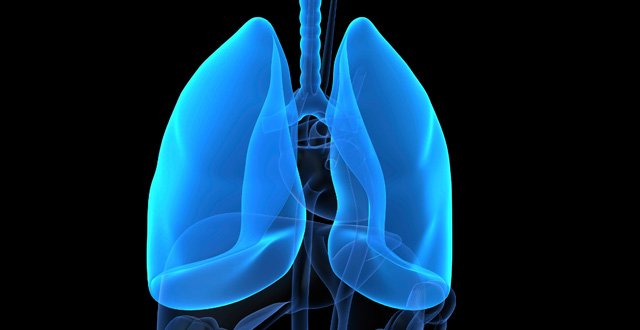
Scleroderma
patients potential candidates for lung transplantation
Patients with pulmonary complications
of scleroderma, who are failing medical therapy, are potential candidates for
lung transplantation, the recent Irish Thoracic Society Annual Scientific
Meeting heard.
Dr Colin
Rutherford of the Irish National Transplant Centre added that extensive
pre-treatment screening is required to carefully select appropriate candidates
most likely to benefit from transplantation and to optimise patients prior to
listing.
There is
conflicting international data and variable worldwide practice, the meeting
heard. However, guidelines are currently under review by the International
Society for Heart and Lung Transplantation (ISHLT) with the aim of producing
consensus guidelines next year.
Dr
Rutherford said that scleroderma is a complex, multisystem autoimmune disease
with significant heterogeneity. With improvements in the treatment of renal
disease, pulmonary manifestations are now the leading cause of death, and
account for 60 per cent of deaths in these patients.
However,
lung transplant offers patients with end-stage scleroderma pulmonary disease a
potential therapeutic option for improved survival.
“And this
is true for both scleroderma associated interstitial lung disease and pulmonary
hypertension,” said Dr Rutherford.
He
highlighted that while survival following lung transplant continues to improve
it lags behind other solid organ transplants with a medium survival at 6.7
years when all indications are combined. Scleroderma remains a relatively
controversial indication for lung transplant worldwide, as concerns remain over
short- and long-term survival due to the multisystem nature of the disease.
“Given
the conflicting data, international practice is widely variable,” said Dr
Rutherford.
He
highlighted that ISHLT registry data showed that connective tissue disease
accounted for 464 lung transplants (0.9 per cent) from January 1995 to June
2018.
Extensive
pre-transplant work-up by the multi-disciplinary team is required to ensure
appropriate patient selection, given the potential impact of complex and often
severe non-pulmonary manifestations of scleroderma, he said.
These
pre-transplant assessments include that the patient has normal renal function,
willing and able to participate in pulmonary rehabilitation, and tolerance to
immunosuppression as well as numerous others.
In terms
of international data, a 2015 US retrospective study between 2005 and 2012
collected information of over 3,000 patients with pulmonary fibrosis, 230
patients with scleroderma and 200 patients with hypertension. The authors found
that scleroderma-associated interstitial lung disease (SSc-ILD) was associated
with a multi-variable adjusted, 48 per cent relative increase in the one year
mortality rate compared to other ILD.
Dr
Rutherford also highlighted 2016 research by Maria Crespo and her group in
Pittsburgh, which demonstrated no significant difference in survival between
scleroderma and pulmonary fibrosis following transplant (66 per cent vs 58 per
cent five-year survival, p= 0.249, median follow up 5.31 years).
Most
recently, a European, multi-centre observational cohort study of 90 patients
with scleroderma who received a lung transplant, was carried out.
“This
showed a one-year survival rate of 81 per cent and five-year survival of 61 per
cent,” said Dr Rutherford. “It appeared that a combination of female sex and
PAH was associated with poorer survival, but the authors held that this wasn’t
significant enough to prevent these patients from proceeding to transplant.”
This
year, Ireland celebrated its 250th transplant and it looks to be the busiest
year on record for transplants, the meeting heard
Between
September 2015 and July 2019, a total of seven patients with a background of
scleroderma underwent lung transplantation in the Mater Misericordiae
University Hospital Dublin.
“Some 71
per cent were female and 71 per cent received a single lung transplant,” he
said.
The
median age at the time of transplant surgery was 65 years (50-to-68 years), and
median BMI at the time of listing was 24kg/m2 (range 19-to-28).
“Oesophageal
dysmotility and subsequent gastro-oesophageal reflux disease requires careful
assessment given the potential link with bronchiolitis alterations post
transplant,” Dr Rutherford said. “All of these patients underwent multi-modality
investigations pre transplant.”
These
investigations showed that of the six patients receiving 24-hour pH manometry,
four were abnormal with an average DeMeester score of 36.8. Five patients had a
Barium swallow and one had an oesophagegastroduodenoscopy.
“Unfortunately
international standardisation and guidelines are currently lacking with regards
to absolute and relative contraindications to transplant,” he said.
Five
patients remain alive and under active follow-up, and the 12 month survival
rate is 71 per cent. The average FEV1 at follow-up was 82 per cent with no
evidence of acute cellular rejection or chronic lung allograft dysfunction.
While
there were no episodes of acute renal crises, all patients have subsequently
developed chronic kidney disease, with an average serum creatinine of
153mmol/L.
“Two
patients had significant surgical wound dehiscence requiring prolonged VAC
dressing, which has since resolved. One patient had significant digital
ischaemia and ulceration post-operatively,” Dr Rutherford outlined.
All
patients remained on dual therapy for reflux disease, but no patient has
required surgical fundoplication for reflux. One patient had prolonged
gastroparesis post-transplant, which took several months to resolve.
In terms of other potential treatment options, the 2019
SENSCIS trial has shown that nintedanib may be able to reduce the rate of
progression of scleroderma associated ILD.
Rituximab
is also becoming more prevalent in use for significant ILD associated with
scleroderma and small observational studies have shown positive outcomes
compared to standard therapy alone.
Dr
Rutherford hoped that the RECITAL randomised controlled trial, due to be
published in November 2021, would provide more information on this.
“Both of those treatments I would see
as complementary to transplant assessment, potentially delaying the need to
transplant, or extending the transplant window,” he said.





Leave a Reply
You must be logged in to post a comment.